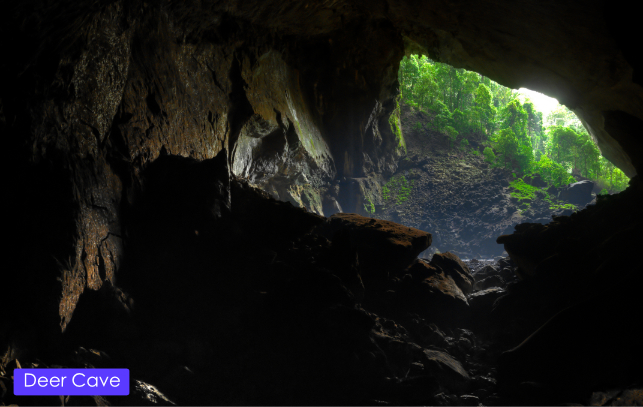The City of Miri, which has a good reputation for its seafood, lies on the northeastern coast of Sarawak, close to Brunei, and is usually visited as a stopover for those travelling to the national parks of the area. Outside Miri’s centre, the most ecologically diverse natural habitat on earth is sheltered within Lambir Hills National Park, and caters for both day trips and longer stays.
Further to the west Similajau National Park sits on the coast close to a collection of unspoilt beaches, and is the preserve of saltwater crocodiles, civet cats, banded langurs, macaques, and porcupines, as well as almost 200 bird species.

GUNUNG MULU NATIONAL PARK
Sarawak’s largest park is a UNESCO World Heritage site, particularly famed for its strange rock pinnacles and the awesome cavernous geology of its vast cave system.
With the true size of some caves yet to be fully assessed, only four of the twenty-five known caves are open to tourists, the most visited being Deer Cave and Lang Cave, the former long regarded as the world's largest cave until the discovery of the awesome Son Doong in Vietnam, which now holds that illustrious title.

Though only recommended for experienced climbers, the park's mountains Gunung Mulu (2,377m - 7,800 ft) and Gunung Api (1,750m – 5,600 ft) provide a good challenge. Guided treks to the Mulu Pinnacles can also be arranged, and require an overnight camp.
Further caves can be seen to the east of Mulu at Niah Caves National Park, which, whilst not as vast as those of Mulu, are the site of archaeological finds some 40,000 years old, and represent the oldest known community of modern humans in the entire East.